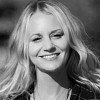28 Years Later: 17 Behind-The-Scenes Secrets You Probably Didn't Know
Ralph Fiennes, Jodie Comer and Alfie Williams in 28 Years Later
28 Years Later has been in cinemas for just over a week, but it’s fast becoming one of the most talked-about cinematic events of the year.
Landing rave reviews from critics and a great reception at the box office, the long-awaited latest instalment in Danny Boyle’s iconic post-apocalyptic horror franchise has most definitely lived up to the hype.
Starring Jodie Comer, Aaron Taylor-Johnson, Ralph Fiennes and newcomer Alfie Williams, the third instalment in the series follows a survivor community living on an island, before some of the group leave to uncover the secrets and horrors that lie on the mainland.
And this is only the first in a whole new trilogy continuing the story, with sequel 28 Years Later: The Bone Temple having already been shot and due for release early next year.
To tide you over before then, though, here are 17 behind-the-scenes secrets about how the new movie was made…
Many of 28 Years Later’s actions sequences were shot using iPhones
The Oscar-winning director famously shot 2002’s 28 Days Later on digital cameras, giving the movie its distinctive grainy look and kinetic urgency. But for the new sequel 28 Years Later, the Trainspotting director went for something a little different.
According to IGN, certain sequences were shot with iPhones, sometimes using as many as 20 at a time.
Danny described that method of shooting with a rig as “basically a poor man’s bullet time”, referencing the iconic slow-mo effect pioneered by The Matrix.
“Wherever, it gives you 180 degrees of vision of an action, and in the editing you can select any choice from it, either a conventional one-camera perspective or make your way instantly around reality, time-slicing the subject, jumping forward or backward for emphasis,” he said. “As it’s a horror movie, we use it for the violent scenes to emphasise their impact.”
Danny Boyle said filming 28 Years Later with iPhones had another benefit, too
While the director outlined the technical reasoning for shooting on iPhones, there was also another important consideration that motivated his decision-making.
“Filming with iPhones allowed us to move without huge amounts of equipment,” Danny told Wired in an interview.
“A lot of Northumbria looks like it would have looked 1,000 years ago. So we were able to move quickly and lightly to areas of the countryside that we wanted to retain their lack of human imprint.”
While this was seemingly partly a creative decision, it feels like a particularly significant choice from the director, whose 2000 movie The Beach infamously drove tourists to the picturesque Thai island where it was filmed and caused significant coral reef damage.
One part of the 28 Years Later set took six months to complete
View this post on InstagramA post shared by 28 Years Later (@28yearslatermovie)
28 Years Later’s grim Bone Temple site featuring a towering pyre of human skulls took around six months to construct, with the design team using over 250,000 replica bones and 5,500 skulls, according to Time Out.
This set was located in Redmire, a village and civil parish in North Yorkshire, with production designer Carson McColl claiming: “There was something about that location that felt that it’s remained unchanged for a long, long time”.
An iconic British landmark was recreated in the film as a tribute
It may have come as a bit of a surprise to cinemagoers to see Northumberland’s famous Sycamore Gap tree briefly featured in one........






















 Toi Staff
Toi Staff Gideon Levy
Gideon Levy Somdeep Sen
Somdeep Sen Belen Fernandez
Belen Fernandez Tafi Mhaka
Tafi Mhaka Tarik Cyril Amar
Tarik Cyril Amar Dr Ramzy Baroud
Dr Ramzy Baroud Stephanie A. Sarkis Ph.d
Stephanie A. Sarkis Ph.d Rachel Marsden
Rachel Marsden Sabine Sterk
Sabine Sterk Ghada Ageel
Ghada Ageel Muhannad Ayyash
Muhannad Ayyash Sarah Tuttle-Singer
Sarah Tuttle-Singer John Nosta
John Nosta
